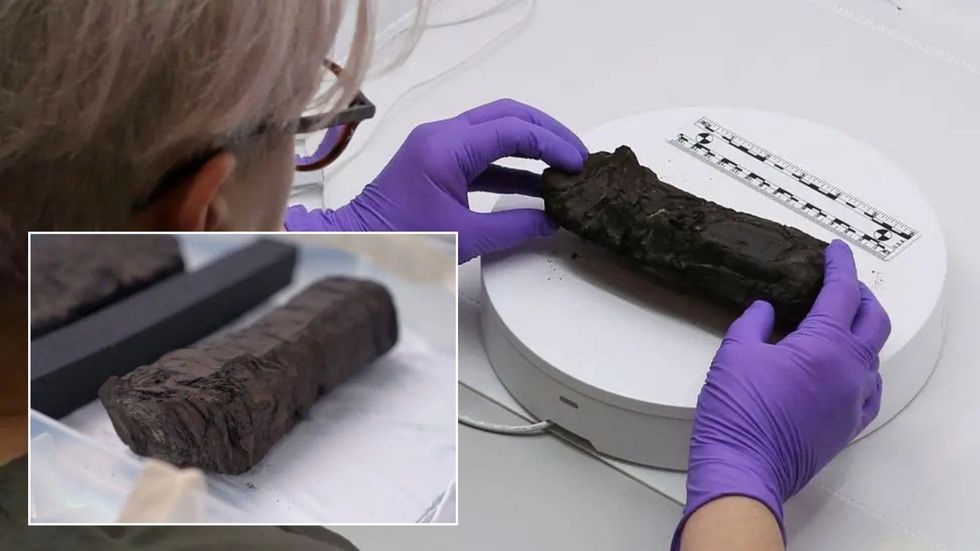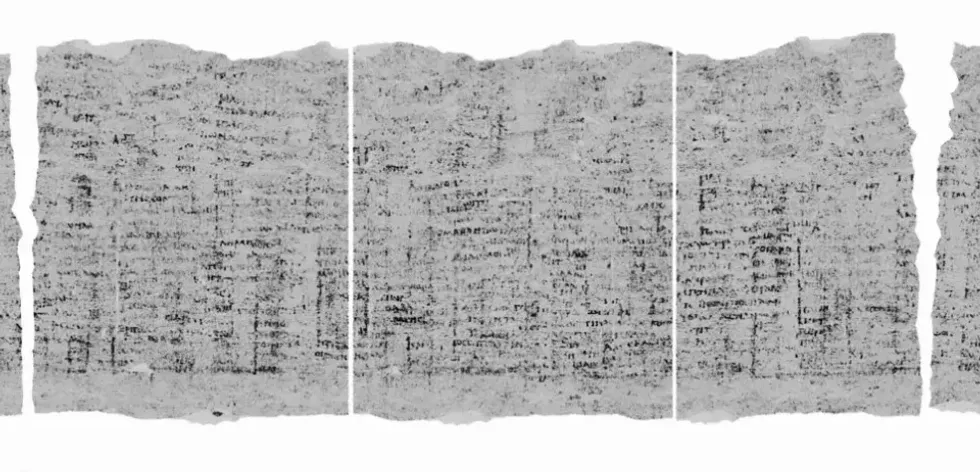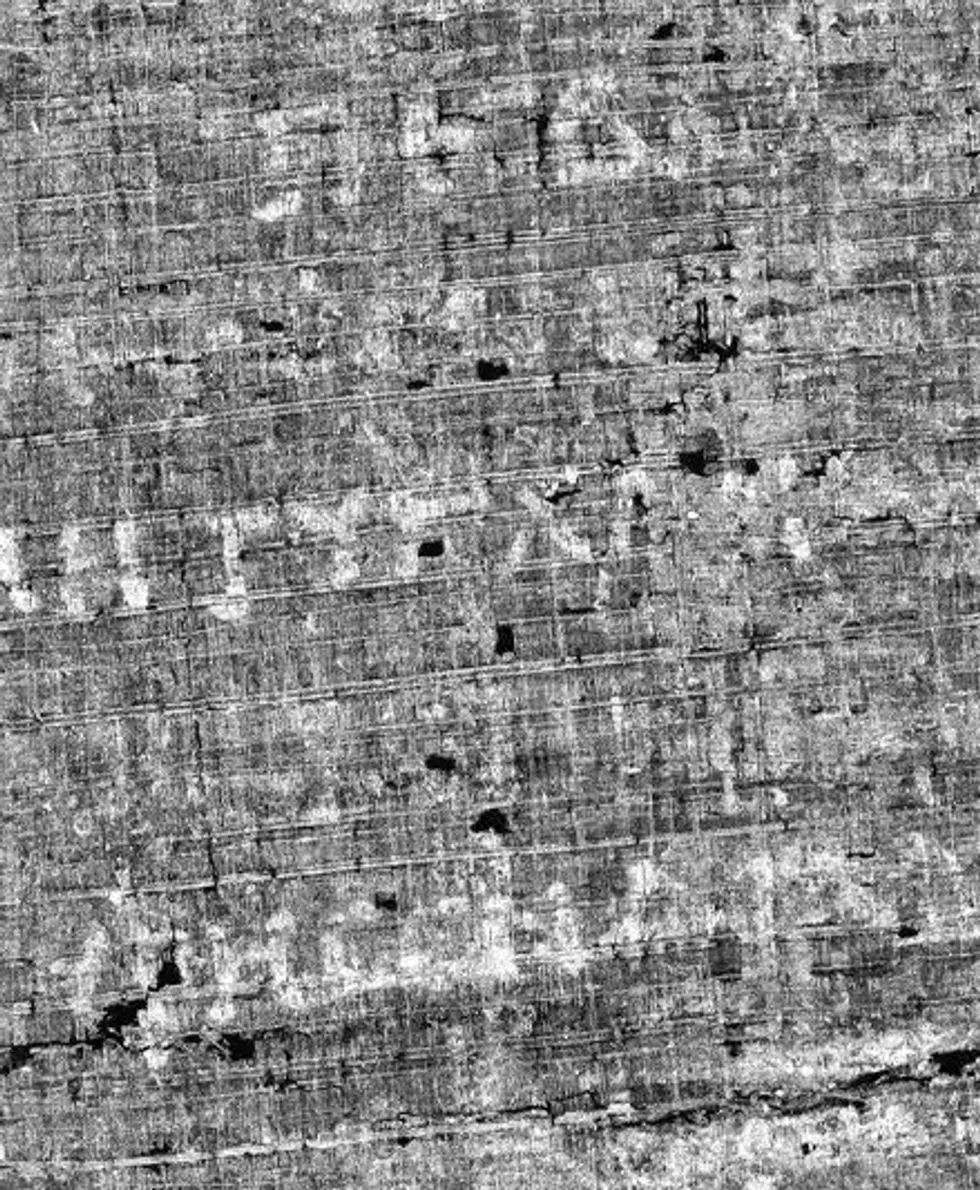Scientists have digitally “unwrapped” a 2,000-year-old charred scroll from the Roman town of Herculaneum – providing the first glimpse inside the ancient document since it was buried by Mount Vesuvius’s eruption in 79AD.
Using a combination of X-ray imaging and artificial intelligence, researchers have revealed rows and columns of text within the scroll, which appears from the outside as a lump of charcoal.
The breakthrough marks the first time experts have been able to read substantial portions of one of these delicate documents without causing damage to the original artefact.
The scroll, held at the University of Oxford’s Bodleian Library, is too fragile to be physically opened due to its severely charred condition.

Scientists have digitally “unwrapped” a 2,000-year-old charred scroll from the Roman town of Herculaneum
Bodleian library
Previous attempts to examine similar scrolls by prising them open resulted in the documents crumbling into pieces.
The document is one of hundreds of carbonised scrolls discovered in Herculaneum, which was buried beneath metres of volcanic ash alongside its neighbour Pompeii.
“We’ve never been convinced before that any of the techniques would be safe enough or effective enough to get any information from the scrolls,” said Nicole Gilroy, head of book conservation at the Bodleian Library.
The scroll was taken to Diamond Light Source in Oxfordshire, where scientists used a powerful synchrotron to generate X-ray beams that could examine the document without damaging it.
“It can see things on the scale of a few thousandths of a millimetre,” said Adrian Mancuso, director of physical sciences at Diamond.
LATEST DEVELOPMENTS:
After creating a 3D reconstruction, artificial intelligence was used to detect and digitally paint the carbon-based ink hidden within the scroll’s layers.
“We’re confident we will be able to read pretty much the whole scroll in its entirety, and it’s the first time we’ve really been able to say that with high confidence,” said Stephen Parsons, project lead for the Vesuvius Challenge.
The team has already made progress in reading these ancient texts. Last year, researchers managed to decipher about 5 per cent of another Herculaneum scroll.
That scroll contained Greek Epicurean philosophy, which teaches that fulfilment can be found through the pleasure of everyday things.

Previous attempts to examine similar scrolls by prising them open resulted in the documents crumbling into pieces
Vesuvius Challenge

Using a combination of X-ray imaging and artificial intelligence, researchers have revealed rows and columns of text within the scroll, which appears from the outside as a lump of charcoal
Vesuvius Challenge
The current scroll is believed to contain similar philosophical content, though more work is needed to confirm this.
“We can tell the entire scroll is full of text,” Parsons said. “Now we can work on making it show up more clearly. We’re going to go from a handful of words to really substantial passages.”
For Nicole Gilroy, the work provides a meaningful connection to ancient history.
“I just love that connection with whoever collected them, whoever wrote them, whoever rolled those scrolls up and put them on the shelves. There’s a real human aspect to it that I just think is really precious,” she said.